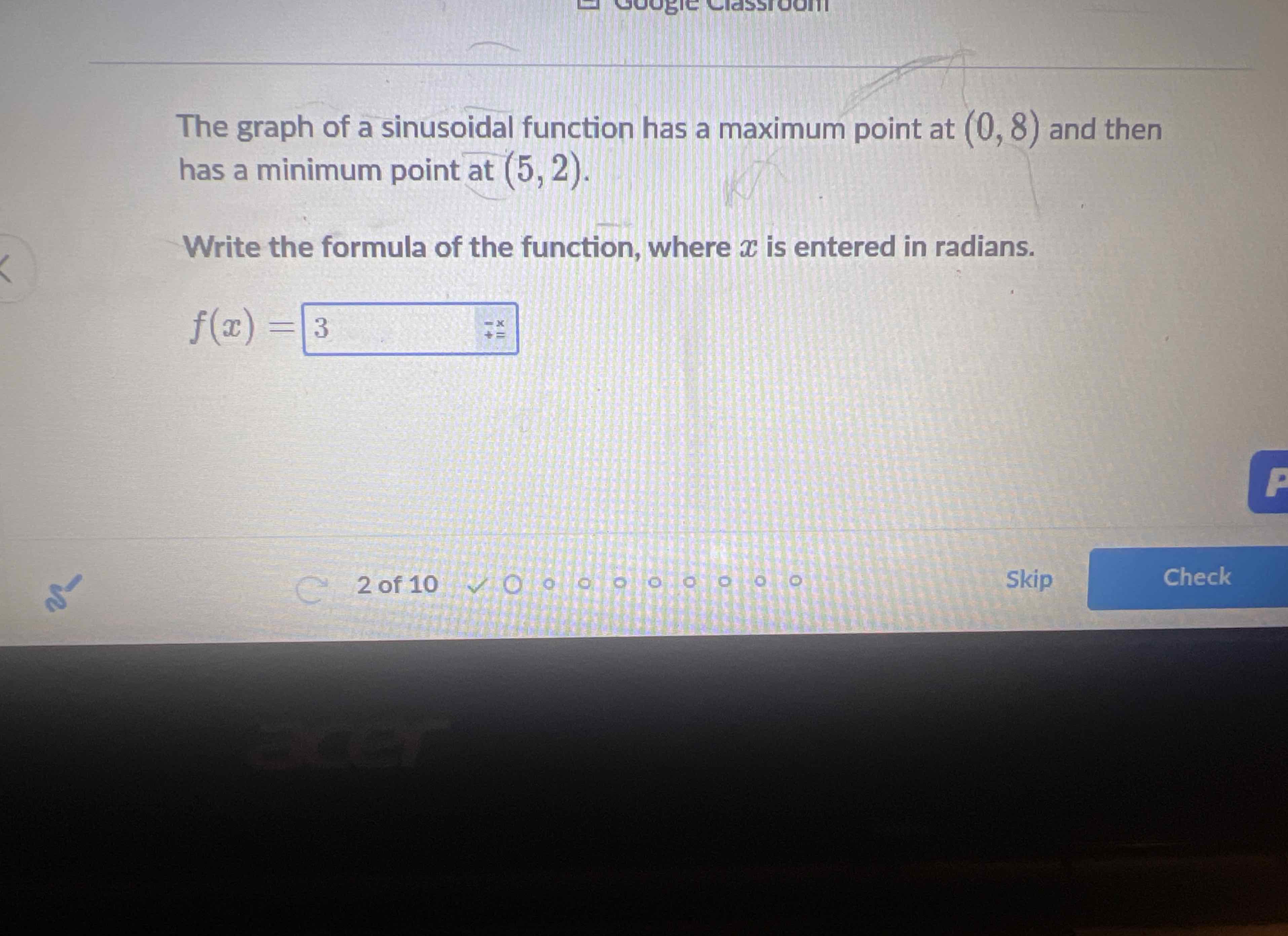Full solution
Q. The graph of a sinusoidal function has a maximum point at and then has a minimum point at .Write the formula of the function, where is entered in radians.
f(x)=_____
- Calculate Amplitude: Determine the amplitude of the sinusoidal function. The amplitude is half the distance between the maximum and minimum values of the function. Here, the maximum value is and the minimum value is . So, the amplitude is calculated as:
- Identify Vertical Shift: Identify the vertical shift of the function. The vertical shift is the average of the maximum and minimum values. Calculate it as:Vertical shift = .
- Calculate Period: Calculate the period of the function. Since the function goes from a maximum at to the next minimum at , half the period is . Therefore, the full period is: .
- Determine Horizontal Shift: Determine the horizontal shift (phase shift) of the function. Since the maximum occurs at , there is no horizontal shift. Thus, the phase shift is .
- Write Sinusoidal Function Formula: Write the formula of the sinusoidal function using the values calculated. The general form of a sinusoidal function is:Where is the amplitude, is the frequency (), is the phase shift, and is the vertical shift. Plugging in the values:Simplify :
More problems from Coterminal and reference angles
QuestionGet tutor help
QuestionGet tutor help
QuestionGet tutor help
QuestionGet tutor help
QuestionGet tutor help
QuestionGet tutor help
Question
. Find the value of in degrees.Write your answer in simplified, rationalized form. Do not round.____
Get tutor helpQuestionGet tutor help

